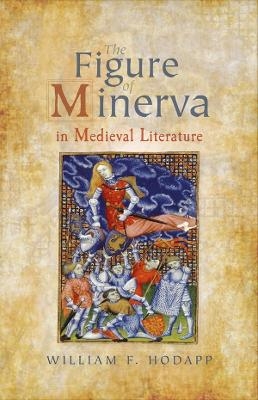
The Figure of Minerva in Medieval Literature
Seiten
2019
D.S. Brewer (Verlag)
978-1-84384-539-3 (ISBN)
D.S. Brewer (Verlag)
978-1-84384-539-3 (ISBN)
First major study of the representation of Minerva in the Middle Ages, giving insights into classical reception.
Images of Minerva, the Roman goddess of wisdom, appear frequently in medieval literature, derived from antique culture and literature; redemptress, mistress of the liberal arts, patroness of princes, idol, and Venus' ally. Throughout the high to late Middle Ages, Peter Abelard, Guido delle Colonne, John Gower, Geoffrey Chaucer, and Christine de Pizan, among others, drew on and developed these images, but they are particularly prevalent in a number of fifteenth- and early sixteenth-century English and Scots allegorical and dream-vision poems, including John Lydgate's Reson and Sensuallyte and Temple of Glas, the anonymous Court of Sapience and Assembly of Gods, James I's Kingis Quair, Charles d'Orleans' Fortunes Stabilnes, and William Dunbar's Golden Targe.
This book offers the first full-length examination of these depictions, bringing out the receptionof classical culture. Via close readings of the various poets, it enables us to understand how her figure was used, and also, and most importantly, to interpret and transform the poetic and cultural traditions from which she springs.
WILLIAM F. HODAPP is Professor of English and Coordinator of Medieval and Renaissance Studies at The College of St. Scholastica, Duluth, Minnesota.
Images of Minerva, the Roman goddess of wisdom, appear frequently in medieval literature, derived from antique culture and literature; redemptress, mistress of the liberal arts, patroness of princes, idol, and Venus' ally. Throughout the high to late Middle Ages, Peter Abelard, Guido delle Colonne, John Gower, Geoffrey Chaucer, and Christine de Pizan, among others, drew on and developed these images, but they are particularly prevalent in a number of fifteenth- and early sixteenth-century English and Scots allegorical and dream-vision poems, including John Lydgate's Reson and Sensuallyte and Temple of Glas, the anonymous Court of Sapience and Assembly of Gods, James I's Kingis Quair, Charles d'Orleans' Fortunes Stabilnes, and William Dunbar's Golden Targe.
This book offers the first full-length examination of these depictions, bringing out the receptionof classical culture. Via close readings of the various poets, it enables us to understand how her figure was used, and also, and most importantly, to interpret and transform the poetic and cultural traditions from which she springs.
WILLIAM F. HODAPP is Professor of English and Coordinator of Medieval and Renaissance Studies at The College of St. Scholastica, Duluth, Minnesota.
Introduction
The Roman Minerva and Elements of Medieval Classicism
The Sapiential Tradition: Minerva as Redemptress
The Martianus Tradition: Minerva as Mistress of the Liberal Arts
The Patrona Tradition: Minerva as Protectress and Benefactor
The Patristic Tradition: Minerva as Idol
The Ovidian Tradition: Minerva as Venus' Ally
Conclusion
Bibliography
| Erscheinungsdatum | 04.09.2019 |
|---|---|
| Zusatzinfo | 5 b/w illus. |
| Verlagsort | Cambridge |
| Sprache | englisch |
| Maße | 156 x 234 mm |
| Gewicht | 650 g |
| Themenwelt | Geisteswissenschaften ► Sprach- / Literaturwissenschaft ► Anglistik / Amerikanistik |
| Geisteswissenschaften ► Sprach- / Literaturwissenschaft ► Latein / Altgriechisch | |
| Geisteswissenschaften ► Sprach- / Literaturwissenschaft ► Literaturwissenschaft | |
| ISBN-10 | 1-84384-539-3 / 1843845393 |
| ISBN-13 | 978-1-84384-539-3 / 9781843845393 |
| Zustand | Neuware |
| Haben Sie eine Frage zum Produkt? |
Mehr entdecken
aus dem Bereich
aus dem Bereich
Poetik eines sozialen Urteils
Buch | Hardcover (2023)
De Gruyter (Verlag)
CHF 83,90
Buch | Softcover (2024)
belleville (Verlag)
CHF 27,95


